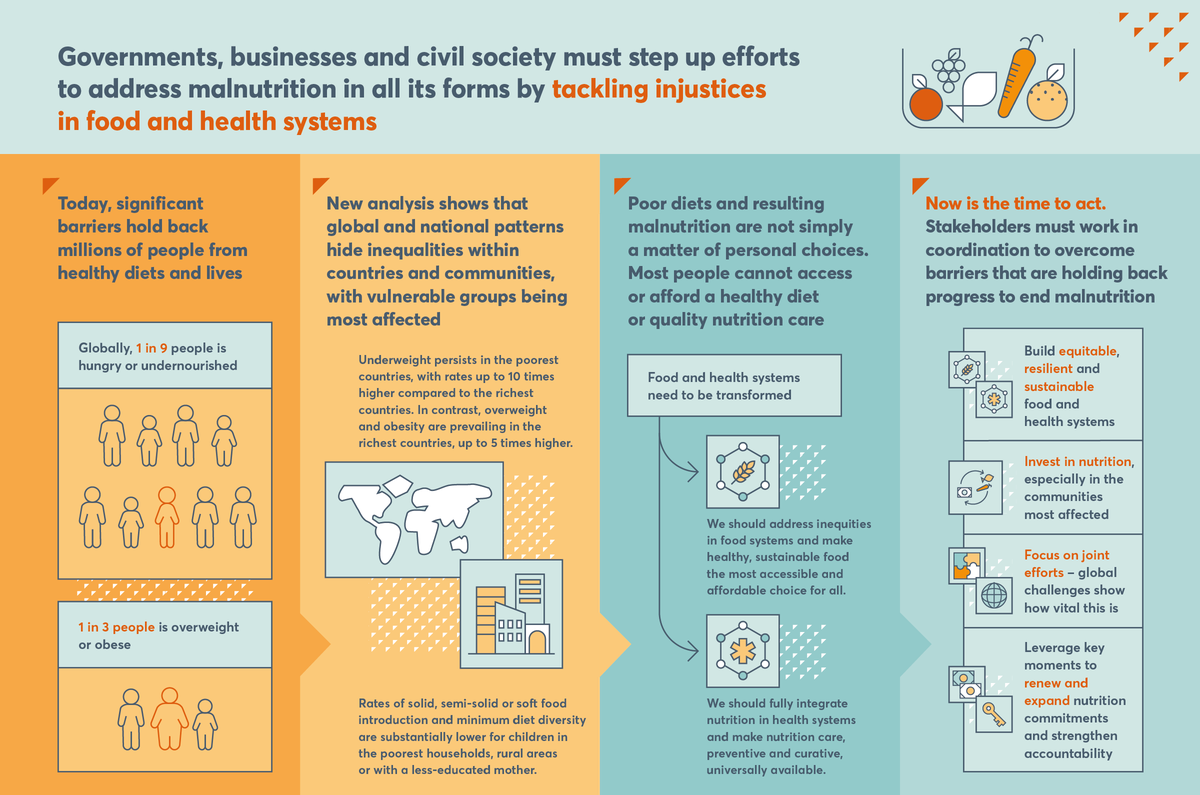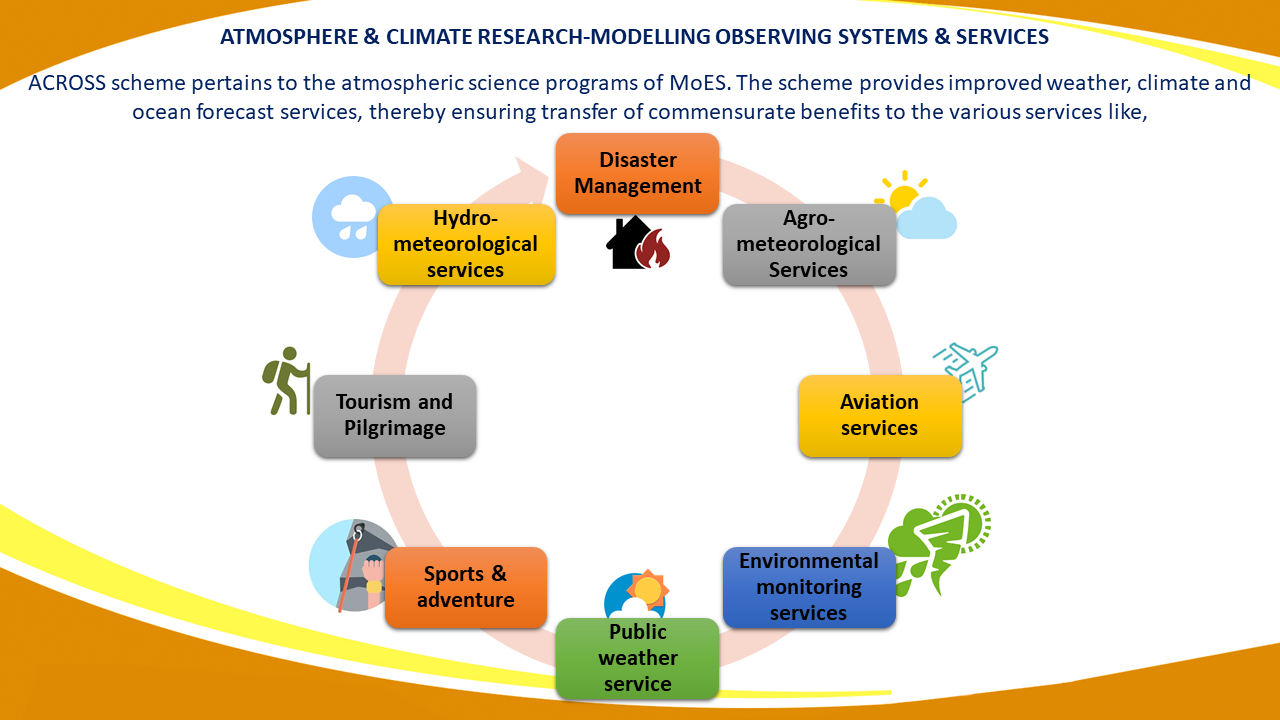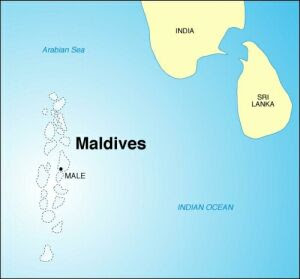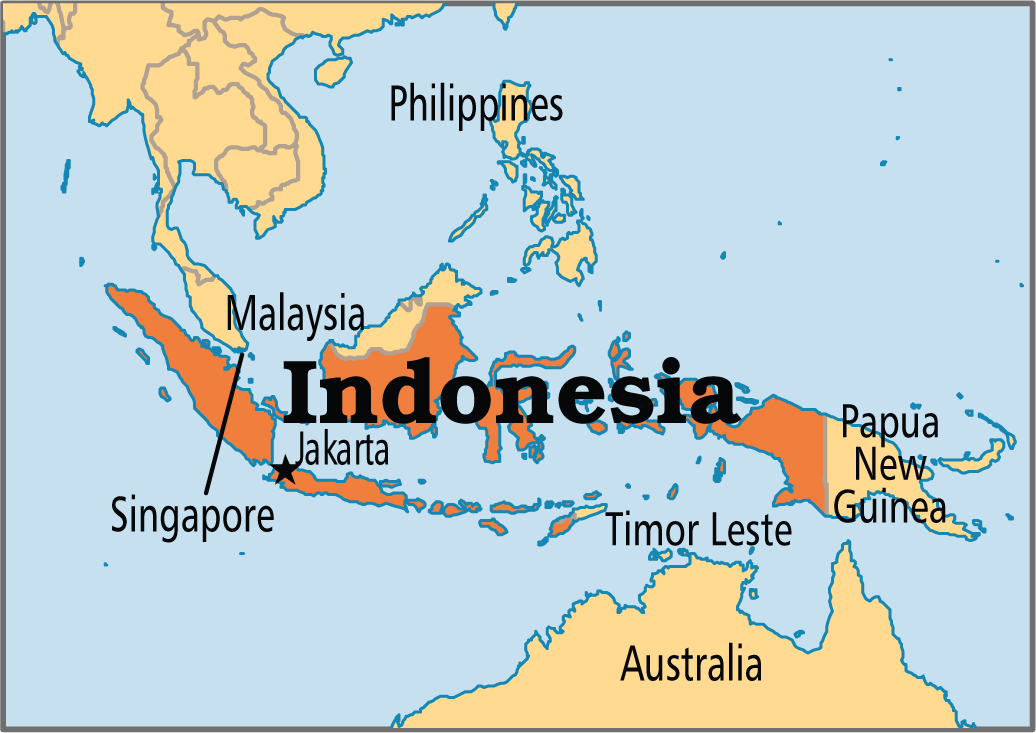Social Justice
Global Nutrition Report, 2021
Why in News
According to the recently released Global Nutrition Report (GNR, 2021), India has made no progress on anaemia and childhood wasting.
Global Nutrition Targets
- In 2012, the World Health Assembly (the decision-making body of the World Health Organisation) identified six nutrition targets to be met by 2025. These are:
- Reduce stunting by 40% in children under 5.
- Reduce the prevalence of anaemia by 50% among women in the age group of 19-49 years.
- Ensure 30% reduction in low-birth weight.
- Ensure no increase in childhood overweight.
- Increase the rate of exclusive breasfeeding in the first six months up to at least 50%
- Reduce and maintain childhood wasting to less than 5%.
Key Points
- Major Findings:
- Global Nutrition Targets:
- At the current rate of progress, the global nutrition targets will not be achieved by 2025 globally and in most countries worldwide.
- Variation in Data Availability:
- There is substantial variation in data availability and progress towards the global nutrition targets across 194 countries.
- Only seven countries are on track to meet four of the six maternal, infant and young child nutrition targets by 2025, while no country is ‘on track’ to halt the rise in adult obesity or achieve a 30% relative reduction in salt/sodium intake.
- There is substantial variation in data availability and progress towards the global nutrition targets across 194 countries.
- Impact of Covid-19:
- The Covid-19 pandemic is impeding progress towards achieving the global nutrition targets.
- An estimated additional 155 million people have been pushed into extreme poverty globally, while people with diet-related chronic diseases experience worse Covid-19 outcomes.
- The Covid-19 pandemic is impeding progress towards achieving the global nutrition targets.
- Little Progress in Improving Diets:
- The previous decade has seen little progress in improving diets, and a quarter of all deaths among adults are attributable to poor diets.
- Greenhouse Gas Emissions Globally:
- Food production currently generates more than a third of all greenhouse gas emissions globally, and uses substantial and rising amounts of environmental resources.
- Sustainable Development Goals:
- No region is on track to meet the Sustainable Development Goals aimed at limiting health and environmental burdens related to diets and the food system.
- Global Nutrition Targets:
- India Specific Data:
- Anaemic Indian Women:
- Over half of Indian women in the age group 15-49 years are anaemic.
- There has been a rise in anaemic Indian women since 2016 from 52.6% to 53% in 2020.
- Childhood Wasting:
- Over 17% of Indian children under 5 years of age are affected.
- India is also among 23 countries that have made no progress or are worsening on reducing ‘childhood wasting’.
- Wasting refers to children whose weight is low-for-their height.
- Child Stunting:
- Over 34% of children under 5 years of age are still affected.
- India is among 53 countries ‘on course’ to meet the target for stunting.
- Stunting is defined as low height-for-age.
- Childhood Overweight:
- The country is among 105 countries that are ‘on course’ to meet the target for ‘childhood overweight’.
- India Meeting Targets:
- India is meeting 7 of the 13 global nutrition targets which include sodium intake, raised blood pressure (both men and women), obesity (both men and women) and diabetes (both men and women).
- Anaemic Indian Women:
- Suggestions:
- Increase Finance:
- There needs to be a step-change in efforts and financial investments to end poor diets and malnutrition.
- Holistic Approach:
- Poor diets and malnutrition should be addressed holistically and sustainably to create a healthy future for all.
- Accountability and Monitoring:
- Better data, greater accountability and systematic monitoring are key to identify the progress needed.
- Increase Finance:
Global Nutrition Report
- It was conceived following the first Nutrition for Growth Initiative Summit (N4G) in 2013.
- The first report was published in 2014.
- It acts as a report card on the world’s nutrition—globally, regionally, and country by country—and on efforts to improve it.
- It is a multi-stakeholder initiative, consisting of a Stakeholder Group, Independent Expert Group and Report Secretariat.

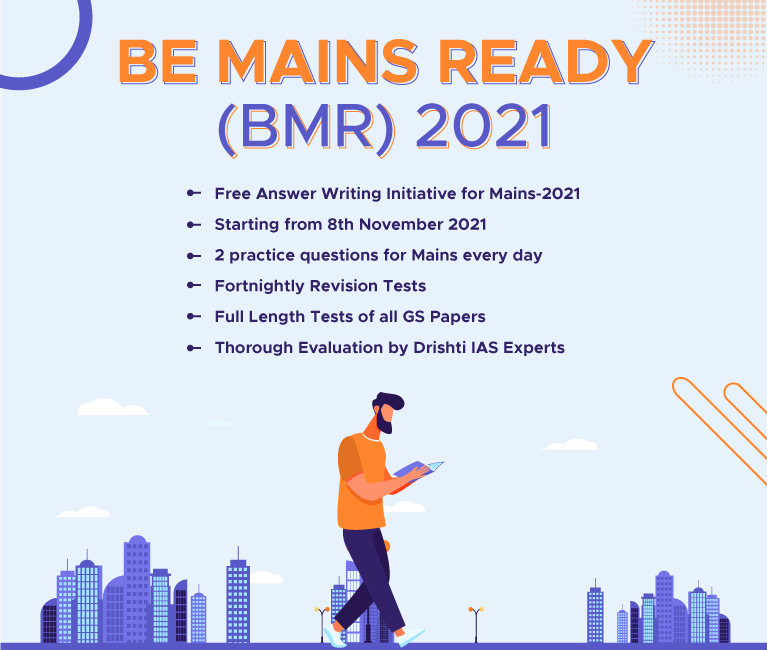
Science & Technology
Antimicrobial Resistance
Why in News
Recently, the Ministry of Animal Husbandry and Dairying has organized a workshop on the National Action Plan to combat Antimicrobial Resistance (AMR), while celebrating World Antimicrobial Awareness Week (WAAW - November 18-24).
- This year's theme of WAAW was “Spread awareness, stop resistance”.
- During WAAW an International Colour Campaign, ‘Go Blue’ campaign, was launched by the AMR tripartite organisations (World Health Organization, Food and Agriculture Organization of the United Nations and the World organisation for Animal Health) to help spread awareness about AMR.
Key Points
- About:
- It is the resistance acquired by any microorganism (bacteria, viruses, fungi, parasite, etc.) against antimicrobial drugs (such as antibiotics, antifungals, antivirals, antimalarials, and anthelmintics) that are used to treat infections.
- As a result, standard treatments become ineffective, infections persist and may spread to others.
- Microorganisms that develop antimicrobial resistance are sometimes referred to as “superbugs”.
- The WHO has declared AMR as one of the top 10 global health threats.
- Reasons for Spread of AMR:
- Contamination around pharmaceutical manufacturing sites where untreated waste releases large amounts of active antimicrobials into the environment.
- Many factors have accelerated the threat of AMR worldwide, including overuse and misuse of medicines in humans, livestock and agriculture, as well as poor access to clean water, sanitation and hygiene.
- Concern:
- Increased Cost of Healthcare:
- AMR is already responsible for up to 7,00,000 deaths a year. It also increases the cost of healthcare with lengthier stays in hospitals, additional tests and use of more expensive drugs.
- Undermining Progress:
- AMR is undermining a century of progress in medicine, infections that were previously treatable and curable with our drugs are becoming (or at risk of becoming) incurable (as medicines are not working against infections).
- Infections and Surgeries Becoming Risky:
- Even common infections are becoming risky and a problem. Surgeries are becoming risky and the cause of all this is found in the behaviour of human beings who are misusing or overusing antimicrobials.
- Inadequate Incentives for New Antibiotics:
- No new classes of antibiotics have made it to the market in the last three decades, largely on account of inadequate incentives for their development and production.
- Headed Towards Antibiotic Apocalypse:
- Without urgent action, we are heading to antibiotic apocalypse – a future without antibiotics, with bacteria becoming completely resistant to treatment and when common infections and minor injuries could once again kill.
- Increased Cost of Healthcare:
- AMR in India:
- India, with its combination of large population, rising incomes that facilitate purchase of antibiotics, high burden of infectious diseases and easy over-the-counter access to antibiotics, is an important locus for the generation of resistance genes (such genes help bacteria in surviving on being exposed to antibiotics).
- The multi-drug resistance determinant, New Delhi Metallo-beta-lactamase-1 (NDM-1), emerged from this region to spread globally.
- Africa, Europe and other parts of Asia have also been affected by multi-drug resistant typhoid originating from South Asia.
- In India, over 56,000 newborn deaths each year due to sepsis are caused by organisms that are resistant to first line antibiotics.
- Measures Taken to Address AMR:
- National Programme on AMR containment:
- The Surveillance Network has been strengthened by establishing labs in State Medical College.
- National Action Plan on AMR:
- It focuses on One Health approach with the aim of involving various stakeholder ministries/departments.
- AMR Surveillance and Research Network (AMRSN):
- It was launched in 2013, to generate evidence and capture trends and patterns of drug resistant infections in the country.
- Antibiotic Stewardship Program:
- ICMR has initiated antibiotic stewardship program (AMSP) on a pilot project across India to control misuse and overuse of antibiotics in hospital wards and ICUs.
- Integrated One Health Surveillance Network for AMR:
- To assess the preparedness of Indian Veterinary laboratories to participate in integrated AMR surveillance network.
- Others:
- India has undertaken many activities like Mission Indradhanush — to address low vaccination coverage — strengthened micro-planning and additional mechanisms to improve monitoring and accountability.
- The Ministry of Health & Family Welfare (MoHFW) identified AMR as one of the top 10 priorities for the ministry’s collaborative work with the World Health Organisation (WHO).
- National Programme on AMR containment:
Way Forward
- Detection and prevention of the sale of spurious drugs, particularly in tier 2 and tier 3 cities.
- The occasional measurement of bioavailability at pharmacokinetics and pharmacodynamics, enforcement of antibiotics policies via prescription databases and auditing of pharmacies.
- Pharmacokinetics is defined as the study of the time course of drug absorption, distribution, metabo- lism, and excretion.
- Monitoring sale of drugs with GST (Goods and Services Tax) tracking/matching of e-prescriptions.
- Shift from the syndromic approach to treatment of the diagnosis, use of new technologies such as imaging and bioinformatics and geographic information systems.
- Adherence to the WASH strategy: antibiotic-free animal feed, and antibiotics fed to animals should be different from those consumed by humans (e.g. marked by different colour schemes).
Governance
Aadhaar 2.0 Workshop
Why in News
Recently, the Ministry of Electronics & Information Technology (Meity) inaugurated a 3-day workshop titled ‘Aadhaar 2.0- Ushering the Next Era of Digital Identity and Smart Governance’.
- The Workshop aims to analyze the reach of Digital Identity in major reforms and schemes launched by the Government.
- It also aims to look into various futuristic aspects of Digital Identity to achieve universal inclusion, both social as well as financial.
Key Points
- About:
- It will provide a platform to share and exchange ideas with Government and Industry leaders, Eminent Academicians and Scientists, Innovators and Practitioners working on Digital Identity in India and abroad.
- The workshop will provide an opportunity to feed into the regional and global debates, while reflecting on India-specific challenges and opportunities to share best practices in terms of people, processes, technology, research, regulatory framework, legal policy and governance.
- Major Discussions:
- Expanding Use of Aadhar: Aadhaar can continue itself as one of the main enablers of identity verification in both on-line as well as offline mode in light of the SWIK rules (Social welfare, Innovation and Knowledge).
- For example, Aadhaar can deliver on e-gov; e-commerce and e-banking and finance in particular.
- Aadhaar as an International Digital Identity Standard: Aadhaar to be developed as a framework for creating International standards for digital identity, a roadmap for International digital identity standards and across borders interoperability.
- Strengthening Privacy Framework: Aadhar's legal framework is settled with the Aadhaar Act, Supreme Court judgement, but for addressing privacy aspects Data Privacy Law needs to be enacted.
- Use of Critical Technologies: Biometrics in Aadhar, can be improved using Artificial Intelligence and deep learning techniques.
- Blockchain-based technologies and applications as well as the impact of Aadhaar and these new technologies in the Banking sector should be explored.
- Expanding Use of Aadhar: Aadhaar can continue itself as one of the main enablers of identity verification in both on-line as well as offline mode in light of the SWIK rules (Social welfare, Innovation and Knowledge).
Aadhar
- About
- Aadhaar number is a 12-digit random number issued by the Unique Identification Authority of India (UIDAI) to the residents of India after satisfying the verification process laid down by the Authority.
- Any individual, irrespective of age and gender, who is a resident of India, may voluntarily enrol to obtain an Aadhaar number.
- Person willing to enrol has to provide minimal demographic and biometric information during the enrolment process which is totally free of cost.
- An individual needs to enrol for Aadhaar only once and after de-duplication only one Aadhaar shall be generated, as the uniqueness is achieved through the process of demographic and biometric de-duplication.
- Legal Framework: The Parliament has passed the Aadhaar and Other Laws (Amendment) Act, 2019 which allows voluntary use of Aadhaar as proof of identity.
- Benefits of Aadhar:
- Promoting Transparency and Good Governance: Aadhaar number is verifiable in an online, cost-effective way.
- It is unique and robust enough to eliminate duplicates and fake identities and thus used as a basis/primary identifier to roll out several Government welfare schemes thereby promoting transparency and good governance.
- Helping Bottom of the Pyramid: Aadhaar has given identity to a large number of people who did not have any identity earlier.
- It has been used in a range of services and has helped in bringing financial inclusion, broadband and telecom services, direct benefit transfers to the bank account of citizens in a transparent manner.
- Neutral: Aadhaar number is devoid of any intelligence and does not profile people based on caste, religion, income, health and geography.
- The Aadhaar number is a proof of identity, however, it does not confer any right of citizenship or domicile in respect of an Aadhaar number holder.
- People-Centric Governance: Aadhaar is a strategic policy tool for social and financial inclusion, public sector delivery reforms, managing fiscal budgets, increasing convenience and promoting hassle-free people-centric governance.
- Permanent Financial Address: Aadhaar can be used as a permanent Financial Address and facilitates financial inclusion of the underprivileged and weaker sections of the society and is therefore a tool of distributive justice and equality.
- Thus, the Aadhaar identity platform is one of the key pillars of ‘Digital India’.
- Promoting Transparency and Good Governance: Aadhaar number is verifiable in an online, cost-effective way.


Indian Economy
Drop in Coffee Output
Why in News
As per data provided by the planters’ community, India’s arabica coffee production will drop by 30% and robusta by 20% this harvest season ending January.
Key Points
- Current Challenges:
- Excessive Rainfall:
- Coffee production will drop due to excessive rainfall, plant damage, bean splitting and berry dropping.
- Coffee-growing regions in India are witnessing extended rains brought about by the depression and low pressure areas in the Bay.
- Harvesting of arabicas, which is currently going on, is challenging during rains for the drying and spreading of the bean in the yards.
- Coffee production will drop due to excessive rainfall, plant damage, bean splitting and berry dropping.
- Cost of Coffee Production:
- The increasing production costs, including fertilizers and labour costs, are expected to reduce growers’ current gains from increased prices and slow down investment in production.
- Excessive Rainfall:
- Coffee:
- History:
- Coffee was introduced to India during the late seventeenth century.
- The story goes that an Indian pilgrim to Mecca smuggled seven beans back to India from Yemen in 1670 (it was illegal to take coffee seeds out of Arabia at the time) and planted them in the Chandragiri hills of Karnataka.
- The Dutch (who occupied much of India throughout the 17th century) helped spread the cultivation of coffee across the country, but it was with the arrival of the British Raj in the mid-nineteenth century that commercial coffee farming fully flourished.
- About:
- Coffee in India is grown under a canopy of thick natural shade in ecologically sensitive regions of the Western and Eastern Ghats.
- This is one of the 25 biodiversity hotspots of the world.
- Coffee is predominantly an export oriented commodity and 65% to 70% of coffee produced in the country is exported while the rest is consumed within the country.
- Coffee contributes significantly to sustain the unique bio- diversity of the region and is also responsible for the socio-economic development in the remote, hilly areas.
- Coffee in India is grown under a canopy of thick natural shade in ecologically sensitive regions of the Western and Eastern Ghats.
- Climatic Conditions Required:
- Coffee plants require a hot and humid climate with temperatures ranging between 15°C and 28 °C and rainfall from 150 to 250 cm.
- Frost, snowfall, high temperature above 30°C and strong sun shine is not good for coffee crops and is generally grown under shady trees.
- Dry weather is necessary at the time of ripening of the berries.
- Stagnant water is harmful and the crop is grown on hill slopes at elevations from 600 to 1,600 metres above sea level.
- Well drained, loams containing a good deal of humus and minerals like iron and calcium are ideal for coffee cultivation.
- Soil Types for Coffee Production:
- Coffee can be grown on lots of soils but the ideal types are fertile volcanic red earth or deep sandy loam.
- For coffee trees to grow it is important that the soil is well draining which makes heavy clay or heavy sandy soils inadequate.
- Major Areas:
- In India, coffee is traditionally grown in the Western Ghats spread over Karnataka, Kerala and Tamil Nadu.
- Karnataka is the largest producer accounting for about 70% of the total coffee production.
- Coffee cultivation is also expanding rapidly in the nontraditional areas of Andhra Pradesh and Odisha as well as in the North East states.
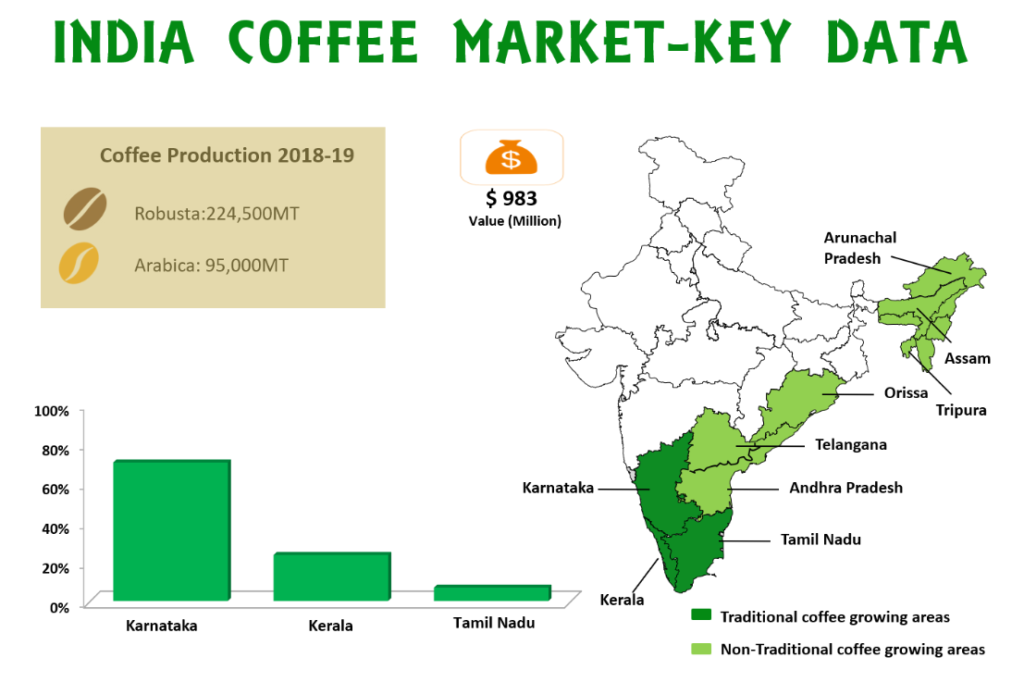
- In India, coffee is traditionally grown in the Western Ghats spread over Karnataka, Kerala and Tamil Nadu.
- Main Varieties: Arabica and Robusta are grown in India.
- Arabica is mild coffee, but the beans being more aromatic, it has higher market value compared to Robusta beans. On the other hand Robusta has more strength and is, therefore, used in making various blends.
- Arabica is grown in higher altitudes than Robusta.
- Arabica requires more care & nurture and is more suitable for large holdings whereas Robusta is suitable irrespective of size of the farm.
- Arabica is susceptible to pests & diseases such as White Stem Borer, leaf rust etc., and requires more shade than Robusta.
- The harvest of Arabica takes place between November to January, while for Robusta it is December to February.
- Arabica is mild coffee, but the beans being more aromatic, it has higher market value compared to Robusta beans. On the other hand Robusta has more strength and is, therefore, used in making various blends.
- History:
Governance
Pradhan Mantri Garib Kalyan Anna Yojana
Why in News
Recently, the Union Cabinet has approved the extension for the Pradhan Mantri Garib Kalyan Anna Yojana (PMGKAY-Phase V) for a period of another 4 months i.e. December 2021 till March 2022.
Key Points
- About:
- PMGKAY is a part of Pradhan Mantri Garib Kalyan Package (PMGKP) to help the poor fight the battle against Covid-19.
- Its nodal Ministry is the Ministry of Finance.
- It was initially announced for a three month period (April, May and June 2020), covering 80 crore ration cardholders. Later it was extended till November 2020.
- Phase-I and Phase-II of this scheme was operational from April to June, 2020 and July to November, 2020 respectively.
- Phase-III of the scheme was operational from May to June, 2021.
- Phase-IV of the scheme is currently operational for July-November, 2021 months.
- The scheme aimed at providing each person who is covered under the NFSA (National Food Security Act 2013) with an additional 5 kg grains (wheat or rice) for free, in addition to the 5 kg of subsidised foodgrain already provided through the Public Distribution System (PDS).
- The new version of the PMGKAY lacks one of its important components which was there in 2020 PMGKAY i:e free-of-cost 1 kg pulses per month to each household covered under the NFSA.
- PMGKAY is a part of Pradhan Mantri Garib Kalyan Package (PMGKP) to help the poor fight the battle against Covid-19.
- Expenditure:
- The government will be incurring an expenditure of nearly Rs.2.60 lakh Crore in PMGKAY Phase I- V.
- PMGKAY-V will entail an estimated additional food subsidy of Rs. 53344.52 Crore.
- Distribution So Far:
- Under the PMGKAY (phase 1 to 4), a total of almost 600 lakh Metric Tonnes (LMT) foodgrains has been allocated to the states/UTs, equivalent to about Rs 2.07 lakh crore in food subsidy.
- The distribution under PMGKAY 4 is presently ongoing, and as per the reports available from states/UTs so far, 93.8 % food grains have been lifted.
- Significance:
- It is significant in a view of daily wagers and informal sector entrepreneurs who lost their job in the wake of Covid-19 induced Lockdown.
- Challenge:
- A key issue is that the beneficiaries of the NFSA are based on the last census (2011). The number of food-insecure people has increased since then and they remain uncovered.


Important Facts For Prelims
ACROSS Scheme
Why in News
The Cabinet Committee on Economic Affairs approved the continuation of Atmosphere & Climate Research-Modelling Observing Systems & Services (ACROSS) Scheme along with its eight sub-schemes to the next finance (15th) cycle of five years (2021-2026).
Key Points
- About:
- It pertains to the atmospheric science programs of the Ministry of Earth Sciences (MoES) and addresses different aspects of weather and climate services.
- Each of these aspects is incorporated as eight sub-schemes under the umbrella scheme "ACROSS".
- The sub-schemes are Commissioning of Polarimetric Doppler Weather Radars (DWRs), Upgradation of Forecast System, Weather & Climate Services, Atmospheric Observations Network, Numerical Modelling of Weather and Climate, Monsoon Mission III, Monsoon Convection, Clouds and Climate Change (MC4) and High Performance Computing System (HPCS).
- Implementation:
- It will be implemented by the Ministry of Earth Sciences through its institutes namely India Meteorological Department (IMD), Indian Institute of Tropical Meteorology (IITM), National Centre for Medium Range Weather Forecasting (NCMRWF), and Indian National Centre for Ocean Information Service (INCOIS).
- Each institute has a designated role for accomplishing the above tasks through the aid of eight schemes.
- Significance:
- The scheme will provide improved weather, climate and ocean forecast and services. This would include warnings for cyclones, storm surges, heat waves and thunderstorms.
- The whole process from generation of forecast to its delivery requires considerable manpower at every stage, thereby generating employment opportunities for many people.
Important Facts For Prelims
Dosti Trilateral Exercise: India, Maldives and Sri Lanka
Why in News
The 15th edition of the biennial trilateral coast guard exercise ‘Dosti’ involving India, the Maldives and Sri Lanka is underway in the Maldives, which will conclude today.
- The year 2021 marks 30 years since these exercises were first launched.
Key Points
- About:
- The exercise was first initiated in 1991, between the Indian and Maldives Coast Guard. Sri Lanka joined the exercise for the first time in 2012.
- The Exercises carried out over the past ten years have focused on exercises and drills on providing assistance in sea accidents, eliminating sea pollution, and the Coast Guard's procedure and conduct during situations such as oil spills.
- Indian Coast Guard vessels Vajra and Apoorva have been deployed for the exercise (2021).
- Aim of the Exercise:
- To further fortify the friendship, enhance mutual operational capability, and exercise interoperability and to build cooperation between the Coast Guards of Maldives, India and Sri Lanka.
- Recent Security Related Development:
- In August this year (2021), India, Sri Lanka and the Maldives agreed to work on what are called the “four pillars” of security cooperation.
- These involved the areas of marine security, human trafficking, counter-terrorism and cyber security.
- Earlier, the three countries agreed to expand the scope of intelligence sharing.
- In August this year (2021), India, Sri Lanka and the Maldives agreed to work on what are called the “four pillars” of security cooperation.
- Exercise between India and Srilanka:
- Exercise MITRA SHAKTI (Military Exercise)
- SLINEX (Naval exercise)
- Exercise between India and Maldives:
- Exercise Ekuverin (Military Exercise)


Important Facts For Prelims
37th India-Indonesia CORPAT
Why in News
The 37th edition of India-Indonesia Coordinated Patrol (India-Indonesia CORPAT) between the Indian Navy and the Indonesian Navy is being conducted.
Key Points
- About:
- It will witness participation of Maritime Patrol Aircraft from both Nations.
- It highlights the mutual trust, synergy and cooperation between the two friendly Navies.
- To reinforce maritime links, the two navies have been carrying out CORPAT along their International Maritime Boundary Line twice in a year since 2002
- Aim:
- It is aimed at keeping the Indian Ocean Region safe and secure for commercial shipping, international trade and conduct of legitimate maritime activities.
- CORPATs help build understanding and interoperability between navies, and facilitate institution of measures to prevent and suppress Illegal Unreported Unregulated (IUU) fishing, drug trafficking, maritime terrorism, armed robbery and piracy.
- In Line with SAGAR:
- As part of Government of India’s vision of SAGAR (Security And Growth for All in the Region), the Indian Navy has been proactively engaging with countries in the Indian Ocean Region for coordinated patrols, cooperation in Exclusive Economic Zone (EEZ) surveillance, passage exercises and bilateral/multilateral exercises.
- The main objective is towards enhancing regional maritime security.
- As part of Government of India’s vision of SAGAR (Security And Growth for All in the Region), the Indian Navy has been proactively engaging with countries in the Indian Ocean Region for coordinated patrols, cooperation in Exclusive Economic Zone (EEZ) surveillance, passage exercises and bilateral/multilateral exercises.
- Other Military Exercises with Indonesia:
- Samudra Shakti: A bilateral maritime exercise.
- Garuda Shakti: A joint military exercise.

